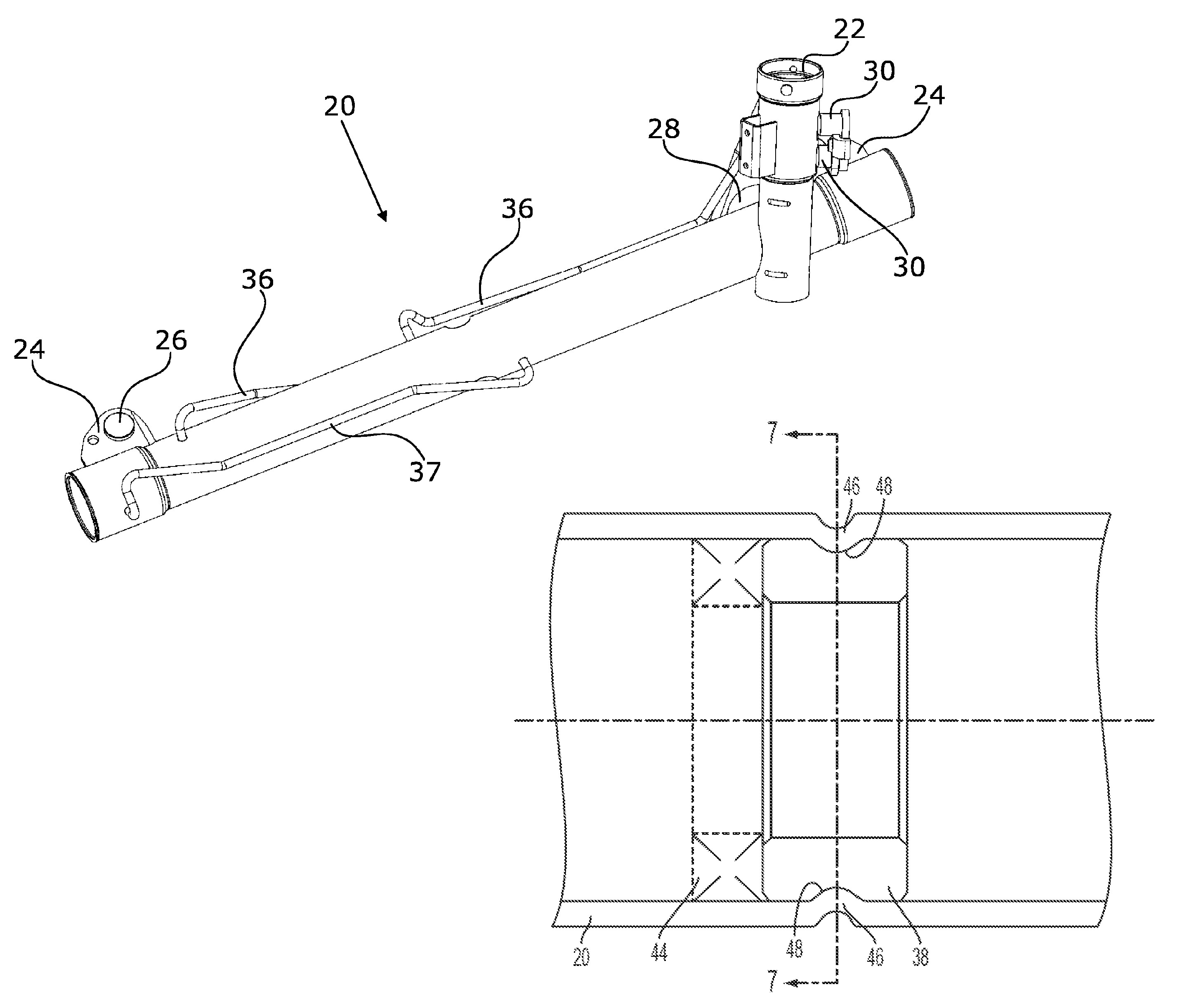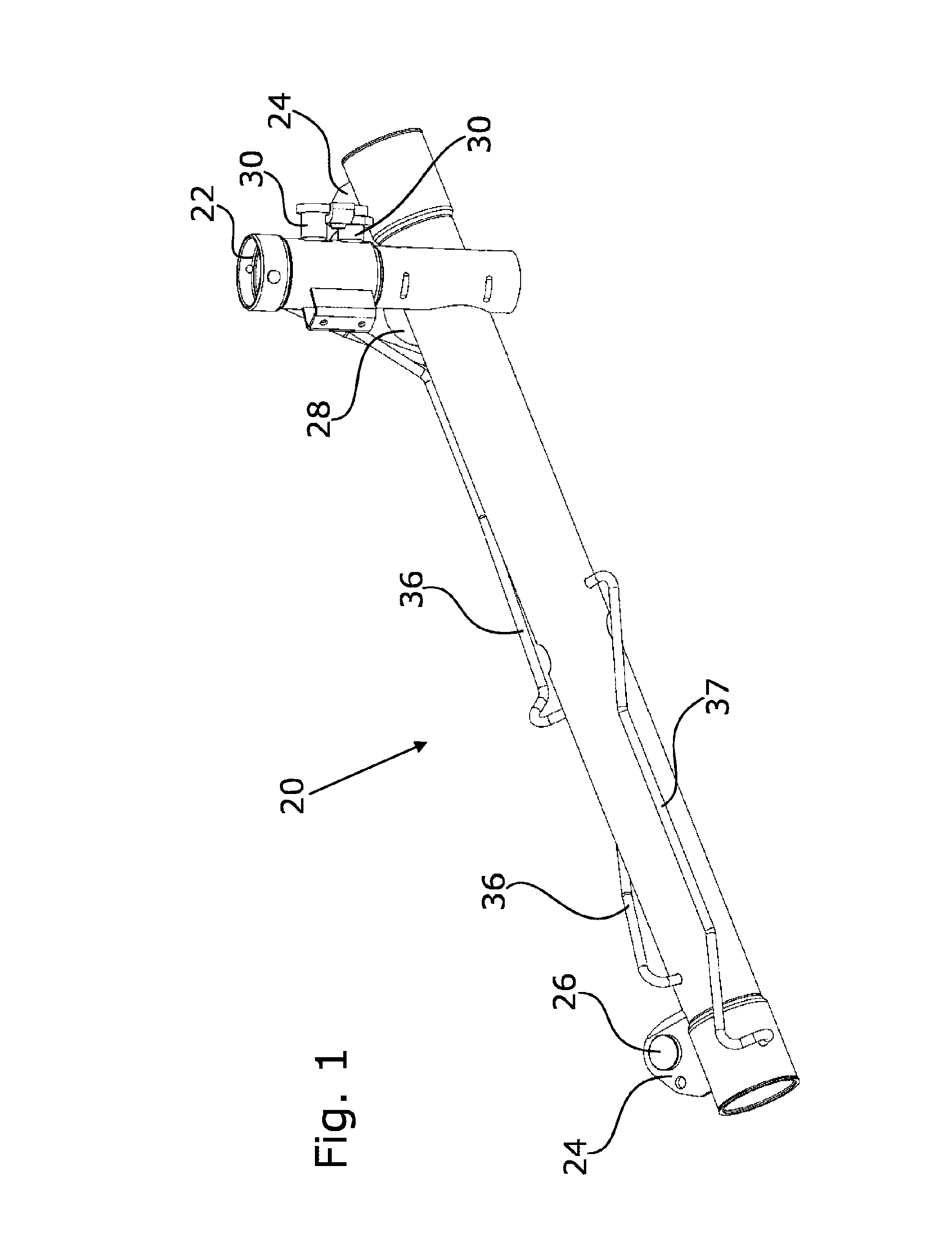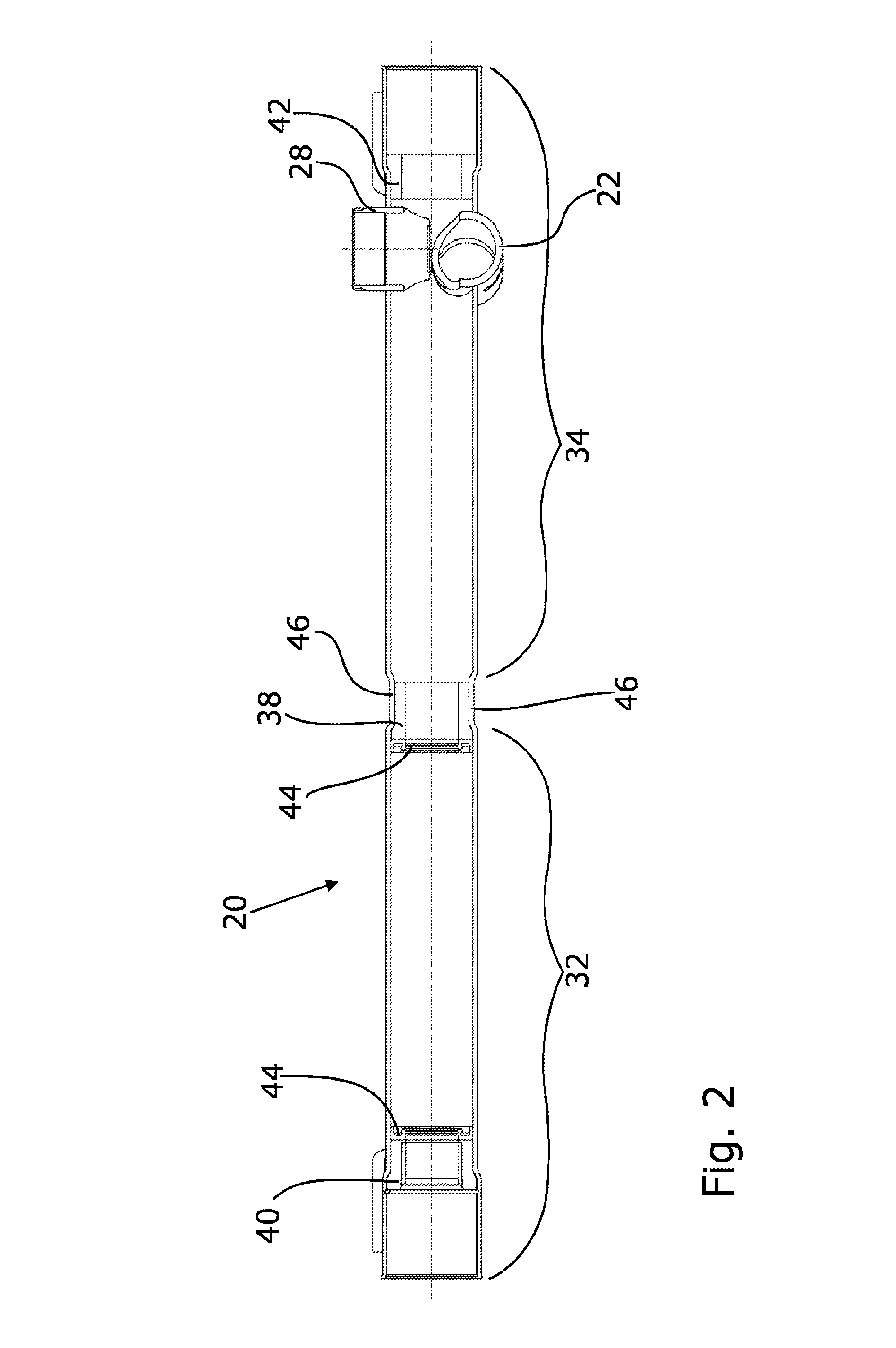Method for attaching a supporting bearing in a steering rack housing for a power steering system
a technology for steering racks and supporting bearings, which is applied in the direction of electrically conductive connections, non-disconnectible pipe joints, ropes and cables for vehicles/pulleys, etc., can solve the problems of relatively large labor and high cost of manufacturing the constricted portion, and achieve the effect of reducing labor and cos
- Summary
- Abstract
- Description
- Claims
- Application Information
AI Technical Summary
Benefits of technology
Problems solved by technology
Method used
Image
Examples
Embodiment Construction
[0034]A steering rack housing 20 according to the invention is configured to be substantially cylindrical. A steering rack, which is not shown, is located within the steering rack housing 20. The steering rack is moved via a pinion connected to the steering column. This pinion, which is also not shown, is disposed in a tower pipe 22. To this end, both the steering rack housing 20 as well as the tower pipe 22 comprise openings which in the mounted state are aligned and form a pinion engagement region.
[0035]FIG. 1 further shows that the steering rack housing 20 has brackets 24 for attachment, which are respectively substantially disposed at the end and which comprise attachment openings 26.
[0036]On the side of the steering rack housing 20 opposite from the tower pipe 22, a sliding member tower 28 is disposed in which a sliding member, which is also not visible, is accommodated. In the exemplary embodiment shown, the tower pipe 22 comprises two supply sockets 30.
[0037]The tower pipe is...
PUM
| Property | Measurement | Unit |
|---|---|---|
| force | aaaaa | aaaaa |
| circumference | aaaaa | aaaaa |
| resilience | aaaaa | aaaaa |
Abstract
Description
Claims
Application Information
 Login to View More
Login to View More - R&D
- Intellectual Property
- Life Sciences
- Materials
- Tech Scout
- Unparalleled Data Quality
- Higher Quality Content
- 60% Fewer Hallucinations
Browse by: Latest US Patents, China's latest patents, Technical Efficacy Thesaurus, Application Domain, Technology Topic, Popular Technical Reports.
© 2025 PatSnap. All rights reserved.Legal|Privacy policy|Modern Slavery Act Transparency Statement|Sitemap|About US| Contact US: help@patsnap.com



